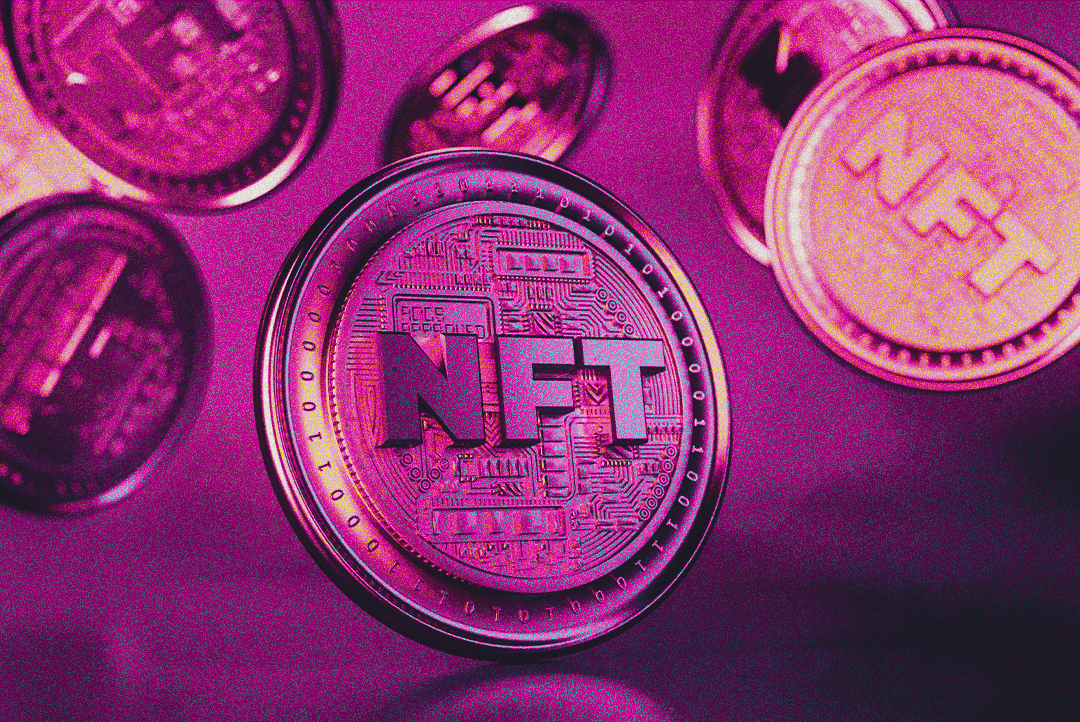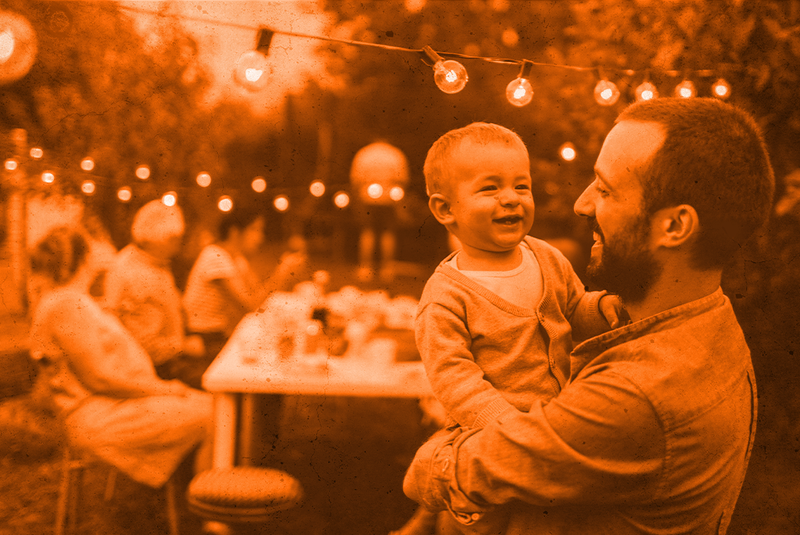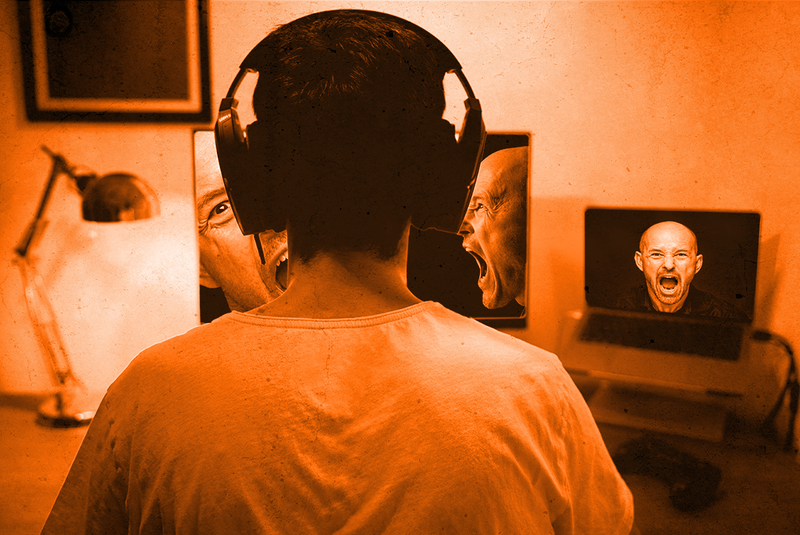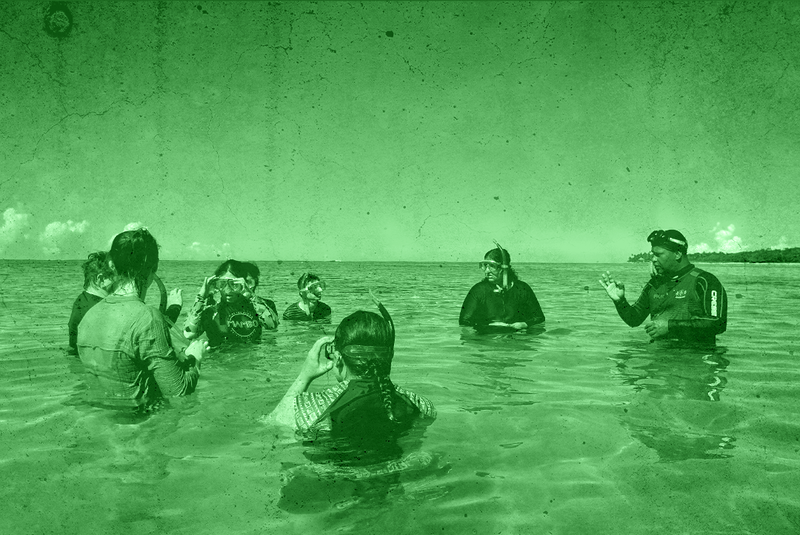
NFTs – non-fungible tokens – are an interesting use of crypto technology, and could enable artists to make a living from their work. Do they work? Are they here to stay? Are NFTs as nifty as they seem? Stay with us as over the next two episodes of What Happens Next as we take a look at NFTs.
Host Dr Susan Carland is joined this week by Professor Jon McCormack, Director of SensiLab and Professor in the Faculty of Information Technology at Monash University; Dr Benjamin Hayward, Senior Lecturer in the Department of Business Law and Taxation at Monash Business School; Joshua Drummond, NZ artist and writer; and Alana Kushnir, arts lawyer and adviser.
Read more: The paradox of NFTs: What are people actually paying for?
In this episode, we find out what an NFT actually is, how they can potentially benefit artists, and the risks associated with buying and selling them. We also look at some of the associated environmental issues.
“I think people get excited about anything that's new. People got excited about the Beatles and Elvis when they hit the scene. And I wonder if it's really much different to that. I think it's a way for us to explore new types of trade. And in the future, this may be something that persists.”
Dr Ben Hayward
If you’re enjoying the show, don’t forget to subscribe on your favourite podcast app, and rate or review What Happens Next? to help listeners like yourself discover it.
The matters discussed in this podcast are intended to be of a general nature only. They are not legal advice, and should not be relied on as such. You should seek independent legal or other professional advice in relation to any particular matters that you or your organisation may have.

Transcript
[Music]
Dr Susan Carland: Welcome back to What Happens Next?, the podcast that examines some of the biggest challenges facing our world and asks the experts, what will happen if we don't change? And what can we do to create a better future.
I'm Dr Susan Carland. Keep listening to find out what happens next.
[Music]
Man: Matters discussed in this podcast are intended to be of a general nature only. They are not legal advice and should not be relied on as such. You should seek independent legal or other professional advice in relation to any particular matters that you or your organisation may have.
[Music]
Dr Susan Carland: NFTs are an interesting use of cryptotechnology, and could enable artists to make a living from their work. But they could also be, well… kind of silly. Do they work? Are they here to stay? Are NFTs as nifty as they seem?
Stay with us over the next two episodes of What Happens Next? as we take a look at NFTs.
So firstly – and don't laugh at me, tech heads – what the hell is an NFT?
Josh Drummond: Oh. Oh boy. How long is this podcast?
[Music]
Jon McCormack: This is going to be a challenge but I'll try.
Ben Hayward: Yeah. It exists in this world we can't touch and we can't see.
Alana Kushnir: The short answer is, it's a non-fungible token.
Dr Susan Carland: Non-fungible, hey? Hmm.
Ben Hayward: When we say it's non-fungible, it's got an identification number that's unique to that token.
Dr Susan Carland: Okay. So NFT stands for non-fungible token. Non-fungible means it can't be replaced.
But that sounds odd, because an NFT is usually an artwork in the form of a digital file, like a JPEG or video, which can obviously be duplicated, copied and shared over and over again.
However, and if I'm following this right, what makes an NFT unique is that every NFT artwork has its own code. Ugh. Can someone please just give me a simple definition?
Josh Drummond: Okay. It's a... It's a digital receipt.
Dr Susan Carland: A digital receipt. A digital receipt. There we go. That was easy.
Josh Drummond: Attached to a, attached to a blockchain, which is a bit of an…
Dr Susan Carland: Agh. Okay. So an NFT is a unique token that is attached to the blockchain. You know the blockchain. It's like a shared database of transactions on the...
Okay. How about I get art lawyer Alana Kushnir to explain?
Alana Kushnir: Well, the first question really is, “What is blockchain?”. I think whenever you're trying to understand what an NFT is, you have to start with this question of “What is blockchain?”. So blockchain is a type of a technology which is a distributed ledger where transactions are recorded, and the idea is they're immutable in that they can never be hacked or changed.
Dr Susan Carland: Mm-hmm.
Alana Kushnir: They can only be built on top of.
Dr Susan Carland: It's written in stone.
Alana Kushnir: It's written in stone. So part of the value of NFTs comes with this immutability that the blockchain gives NFTs.
So tokens essentially live on the blockchain. Tokens represent the transactions that are recorded on the blockchain, and some of those are fungible, some of those are non-fungible.
And fungible tokens are Bitcoin, Ethereum – they're your cryptocurrencies. And the idea is, if I had one bitcoin and you had one bitcoin, if we exchanged those, we would end up with the same amount.
Dr Susan Carland: Yep.
Alana Kushnir: Whereas a non-fungible token is slightly different. So it's kind of like if I bought a Picasso and you bought a Rembrandt, and we exchanged those paintings, we wouldn't end up with the same thing that we started off with. So they're non-fungible. So the idea is the token is unique.
And that's also where part of the value of non-fungible tokens lies, because they are unique on the blockchain and we can tell that there's only one of that type.
Dr Susan Carland: So if I'm an artist, how do I create one of these tokens? How do I make an NFT? I need to speak to a digital artist.
Jon McCormack: Hi. I'm Jon McCormack. I'm a computer artist and computer scientist, and I'm the director of SensiLab, a creative technologies lab at Monash University's Caulfield Campus.
Dr Susan Carland: Right. I want to create an NFT for this painting that I've created. How do I do that? How do I make an NFT for that?
Jon McCormack: So usually you do it via one of the many sites that deal in cryptocurrencies and NFTs. So you basically go onto the site. You have to have a digital asset usually associated with your work, although people have associated NFTs with physical paintings or physical art objects as well. And, then basically you pay what's called a gas fee, which is a fee that generates some unique token which is the NFT itself. And, you get given that NFT digitally and then someone can buy that NFT from you and transfer ownership from you to the person who buys it.
Dr Susan Carland: Okay. So if I'm an artist, I could turn an artwork into an NFT and sell it. However, if I'm buying an NFT, what do I actually own?
Ben Hayward: Hi. My name is Ben Hayward. I'm a senior lecturer in the Department of Business Law and Taxation at the Monash Business School, and my research work looks at how the law can support international trade in various forms in particular.
So you don't really own that artwork in the same way that you might own a physical painting. What you own is the token and it's linked to some extra right.
Alana Kushnir: You can actually think of it like, I don't know, buying a bottle of water from a vending machine or buying a cup of coffee. When you buy that bottle of water or a coffee, you own that property. You can enjoy it to the exclusion of anybody else. That's the kind of... That's the fundamental principle of personal property. It's something that you can possess, and you can possess it to the exclusion of anyone else.
So take that in the context of a painting or a sculpture. You buy a painting, you buy a sculpture, you can display it in your house, you can loan it to somebody. You could loan it to a museum for an exhibition. You could sell it as well. So that's your kind of traditional artwork.
But when it comes to digital artwork, it's a little bit different, and that's because it's so easy to reproduce. Right?
Dr Susan Carland: Mm...
Alana Kushnir: So you don't necessarily... If I send it to you via email, a digital file, we could both enjoy it at the same time. You could look at the image, the digital file, and I could look at it on... We could be on complete other sides of the world, and we can both enjoy it as it's meant to be enjoyed. So in that way, a digital artwork has some fundamental differences to a painting or a sculpture.
And if we look at the history of art, and especially late modern art and contemporary art, a lot of artists were driven by this idea of wanting to question this idea of ‘what is an original artwork? What is an authentic artwork?’. The idea that there's no... In today's world, there's no such thing as the one authentic piece. Think of like performance art, for example. That's also intangible.
So in some ways, I also think digital artworks, NFTs, not so new. Artists have really been pushing the boundaries when it comes to what is art and what you buy when you buy an artwork for far longer than NFTs have existed.
What NFTs do though is, from a very practical level, they do tell us who owns that NFT, who owns that digital artwork. So that's the basic benefit of minting your digital artwork as an NFT.
Dr Susan Carland: So why are people so excited about NFTs? Here's Ben Hayward.
Ben Hayward: I think people get excited about anything that's new. People got excited about The Beatles and Elvis when they hit the scene.
[Laughter]
Ben Hayward: And I wonder if it's really much different to that.
I think it's a way for us to explore new types of trade, and in the future this may be something that persists. We might end up using NFTs for different purposes. It's a bit hard to know at this stage, but they give us an opportunity to do something we've never really done before.
And I guess for the purpose of trading art, where previously you have a digital file that represents some artwork that's infinitely reproducible – meaning its value is basically nothing, not really a very attractive prospect for trading those kinds of artworks online – this is a way to maybe deal with that, make online artwork unique and allow it to have a tradable value, and possibly support artists at the same time.
Dr Susan Carland: Do you think NFTs are beneficial for artists?
Ben Hayward: They could be in the sense that I don't know that there was really an effective way to trade digital art before this technology.
I guess artists are going to want to make sure that the contracts they have in place around the trade in these NFTs are beneficial to them, whether that means retaining the intellectual property rights, making sure they're properly paid for the work they're producing. But I guess, as we've said, if you've got an ordinary file infinitely reproducible – so effectively worth nothing – this situation has some definite advantages over that.
Jon McCormack: Personally, I have a lot of reservations. So I've never really used them.
Dr Susan Carland: Here is Director of SensiLab Jon McCormack.
Jon McCormack: I've sort of dabbled a little bit, but I didn't really get in when it was... when I probably could have. I probably wouldn't be talking to you now, or you'd be talking to me from my multimillion dollar apartment somewhere in wherever if I had.
But I'm not sure… I mean, I do appreciate the fact that there were a lot of people who had menial jobs who wanted to be artists who suddenly could live that possibility. I mean, being an artist and earning money are two things that normally don't go together, and if you look at, even in Australia, the average income of people who professionally say they're artists is amongst the lowest of any profession.
So I certainly don't want to deny people the... If a technical mechanism enables somebody to earn a living from something that is creative, and gives them enjoyment and pleasure, and gives other people enjoyment, then I think that's a fantastic thing.
But also cryptocurrencies are ultimately kind of Ponzi schemes. They're basically... They rely on a whole lot of collective herd mentality about the value of something that doesn't really actually have that value.
Josh Drummond: NFT proponents might say that it helps protect from fraud and theft because you've got this untraceable digital receipt that's forever linked to a particular artwork. But to my mind, that doesn't hold up to scrutiny at all.
Dr Susan Carland: Josh Drummond is an artist from New Zealand and a very proud NFT cynic.
Josh Drummond: One of the major problems when NFTs first got big was people would – NFT fans, or grifters, or whatever – would grab someone's JPEG that's floating around on the internet, like a named artist or someone with a following. They'd take their work and just sell it. They'd make an NFT of it and sell someone else's stuff. That's just stealing.
Dr Susan Carland: Yeah.
Josh Drummond: And, it facilitated tonnes of this stuff, and none of the NFT marketplaces originally – and I still don't really think currently – had sort of robust systems in place to protect against this.
So they didn't really facilitate inviability. They actually just made art a lot easier to steal.
Alana Kushnir: I'm not going to lie. This is a big problem at the moment, and I'm finding that a lot of artists that I work with are finding copycat NFTs of their works online. And they ask the same question: “Well, what do I do? What can I do at this point in time?”
Most mainstream NFT platforms have set out what we call a DMCA takedown notification process, and that's essentially an American style of requesting that you take down infringing content. And you have to follow the strict guidelines that the platform sets out in order to do that.
But even myself in practice, when I've acted for artists and we've done these takedown notices, it hasn't been that straightforward. Even a year ago, I would say, a lot of the mainstream platforms perhaps didn't get as much legal advice as they have at this point in time, and so those processes that are set up weren't that straightforward. They weren't easy for someone who's not a lawyer to be able to navigate and do.
They are getting easier, but there's been lots of instances in which artists have tried to get their content taken down. They haven't had the result that they wanted. Some of them have gone out on social media – vented about it on social media – and unfortunately or fortunately, that's when the platforms have acted.
Josh Drummond: Unless you can afford or have got a friend who's a copyright lawyer who can afford to fling out DMCA notices all day. And, I mean, it's a lot of overhead with… even if you are wealthy, it'd be pretty hard to keep up with.
So I think there is a promise of eternal receipt or whatever. I really think it's kind of overblown. The main interest for me was whether seeing artists could kind of hitch their artwork to this trendy new bandwagon and make a killing off it. And, some definitely did. Like, Beeple is the obvious use case, who is now richer than God.
Dr Susan Carland: Before NFTs were a thing, the digital artist known as Beeple, Mike Winkelmann to his friends, hadn't sold a print for anything over $100. However, since he turned some of his work into NFTs, he's made some serious money. How serious? Well, one of his NFTs, a collage of his work, sold at auction for almost $90 million. Yep – 90 million.
So for that price, the buyer of Beeple's work gets a digital file and the artist himself, as Josh Drummond just said, becomes richer than God.
But is the artwork any good? Or is this just a fundamental, never-ending question we seem to ask every time something new happens in the art world?
Jon McCormack: If you look at the famous NFT works like the Beeple work... I don't know if you know about this work, but Beeple is an artist who... He was well-known, but not super well-known, and he famously auctioned off this work that sold for millions and millions of dollars, huge amounts of money, massive amounts of money.
But anyone can have a copy of that work, the same copy that the person who paid all that money has. There's no difference. So I have the full resolution image. Is it great art? To me, it's not worth anywhere near the amount of money that was paid for it if you compare it to actual works that you think throughout history have sort of earned a reputation as being significant human works of art. This is not in that league, in my opinion.
So there is this tainted aspect that this has that I... And I think it's sort of typical of the tech world at the moment, when as soon as something, there's a scheme to make money, this sort of human greed takes over. And art just seems to be the vehicle that provided that moneymaking mechanism, and it was largely peripheral.
Dr Susan Carland: I suppose, in the end, people will buy whatever art they like, whether it's good, or rubbish, or if you look at it, as a talented artist, and go, “That's a piece of crap.”
Jon McCormack: Yeah.
Dr Susan Carland: But I might go, “Oh, but it's lovely.”
Jon McCormack: Yeah.
Dr Susan Carland: That's always existed. Hasn't it? Like, people without much...
Jon McCormack: Well, yeah. Yeah. I'm not… So I've thought about this quite a lot, and I wrote an essay recently about it, and I think it's more complicated than that.
I think a lot of it was to do with, because there's money involved – and eye-watering amounts of money in some cases – I think people lost sight of the fact that it might just have artistic value for its own sake, and looked at it more as a kind of investment thing.
I think it's also the kind of fear of missing out. If all of your friends are saying, “I bought an NFT. I own this. Look at what I bought for $20,000,” you think, “I've got to get into that too. I don't want to be left out.”
And so issues of aesthetics, or taste, or meaning, or any of those things that you might traditionally think of as being qualities that might cause you to like a work of art or not, are kind of thrown out the window. This power of ownership is really important.
Dr Susan Carland: Yeah.
Jon McCormack: Because that's the only thing that NFTs really did. They didn't change the art itself. I mean, people were always making digital art. They just had this weird way of saying you own this in some very nebulous, unlegally verifiable sense of ownership.
Dr Susan Carland: Mm. That's really interesting. I wonder if it tapped into this part of the human psyche… This very animalistic part of human psyche, which is, “I want the rare thing. I want the thing that other people can't have.”
Jon McCormack: Yeah.
Dr Susan Carland: Because it makes it valuable.
Jon McCormack: Yeah.
Dr Susan Carland: And so NFTs were putting something that's very rare in the hands of everyday... Most of us can't. – we'll never be in a position to buy the $5 million, one-of-a-kind sports car, or the Picasso.
But NFTs were saying, “Actually you, you can do this now. You can have a thing no one else can have, and it will give you the bragging rights”. And I wonder if there's a very human inclination to want those things.
Jon McCormack: There's a whole lot of psychology around conspicuous consumption, and people. Why do people have an art collection that they want to show off? To show that they have wealth, power and status, and so on. And then there's sort of more, probably more fundamental evolutionary biological reasons why you might want to do that, too, just to sort of show the quality genetically that you've managed to achieve this ability to buy something that no one else can have.
So I think a lot of it was that. A lot of it is also that you could own a Porsche if you traded in NFTs at the right time. So if you bought in low and sold high, you could basically take your crypto money that you paid for the NFT, or that you received for it when you sold it on to someone else, and turn that into real money, and then actually be enough to spend that real money on something.
[Music]
Dr Susan Carland: It turns out there are also environmental impacts associated with NFTs. Professor Jon McCormack explains.
Jon McCormack: When NFTs first took off and cryptocurrencies sort of became a mainstream thing, there was a lot of discussion about the environmental impact. So you were seeing, for example, large bit mining or bitcoin mining factories, I guess you could call them, in China, for example, that were using coal-fired power plants to power their cryptomining that they were doing. And so there was reaction against this.
It gets more complicated technically because there's two different kinds of cryptomining mechanisms, they're called, and one of them is far less environmentally damaging than the other. But the major platforms like Ethereum, Bitcoin, still use the old method which is environmentally quite, you know…
There's lot of industries that are environmentally bad in terms of their power consumption, but this just seems to be an added thing that's purely largely for human folly. And environmental impacts have been really high, and now that there's – when the market drops out, it's also not just the power consumption, it's all the e-waste.
So people were... This big shortage of computer chips partially arose because of this rise in crypto and NFT. People were buying hundreds of thousandsof GPUs or CPUs, putting them in big racks, running them from coal-fired power, for example.
And that caused a chip shortage. That caused a whole lot of people that might be using these for other, perhaps – you might argue – more, well, ethically interesting or ethically valid reasons, were not able to access it because the cryptominers have bought them all up.
So I think there is this huge issue with it that still exists today. Ethereum have said they're going to change to a more environmentally friendly scheme, but they haven't yet. And I think there was a lot of pressure on artists to think carefully about the environmental impact of selling their work on NFTs. So a lot of platforms arose that were supposedly green.
I mean, any NFT, or any computer system, uses power. You can't get around that. So there is an additional cost in terms of the power consumption, and that's largely opaque to the user. Where does the crypto gets its power from, and who's doing the mining? Because it's all distributed, it's very difficult to chase all that up.
Dr Susan Carland: So has the bubble already burst on NFTs?
Jon McCormack: I think a lot of interest... And again, I think this is due to sort of... I hesitate to say the end of the pandemic, but at least a change in the way.... We're no longer in lockdowns. We're no longer... Galleries are open again. You can go to museums. People are getting out.
Digital works are great if you're sitting in front of a computer. But as you said, I mean, you can print them out and hang them on the wall if you want to, but most of them, I think people might look back and say, “Really? I paid that much money for that?”
Dr Susan Carland: I'm glad I can finally get my head around what an NFT actually is.
Are NFTs all that bad? Is there potential for artists to get paid, and consumers to make a good investment? What does the future look like for NFTs? In our next episode, experts in the fields of business and law discuss some of the ways they are helping both artists and consumers navigate the tricky legal world of NFTs. We'll also find out about the world's first self-proclaimed anti-NFT project.
Thanks to all our guests, Dr Ben Hayward, Professor Jon McCormack, Alana Kushnir and Josh Drummond. For more information about their work, visit our show notes.
If you're enjoying What Happens Next?, don't forget to give us a five-star rating on Apple Podcasts or Spotify, and share the show with your friends. Thanks for joining us. See you next week.





